Sun Microsystems Type 6 Keyboard
Type 6
Sun Microsystems Type 6 keyboard is one of the worst. The following shows the one that is the keyboard for Sun Ultra 5 computer (year 1998).

This keyboard i used around 2000. (photo taken during that time) The key feel is mushy. It's using rubber dome switch.
〔see Keyboard Key Switch Mechanisms〕
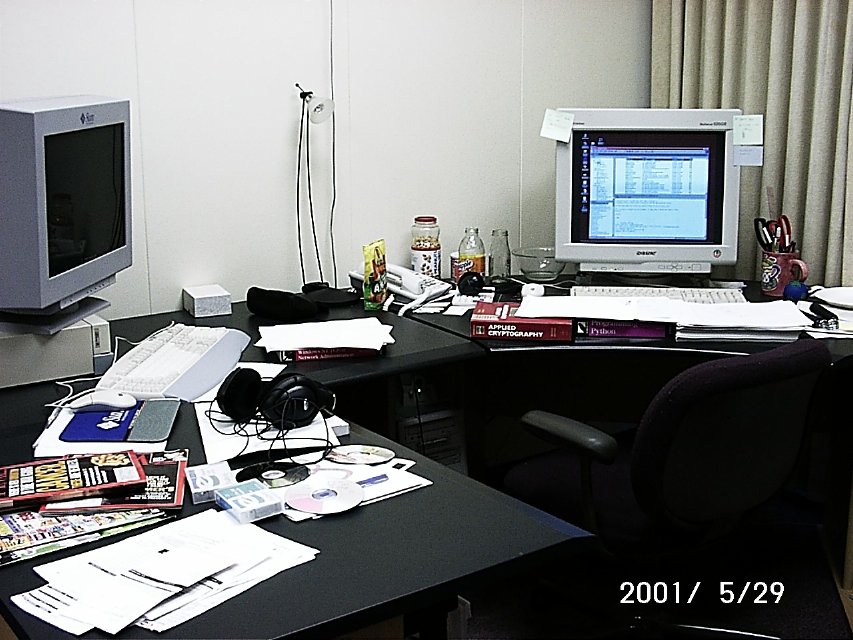
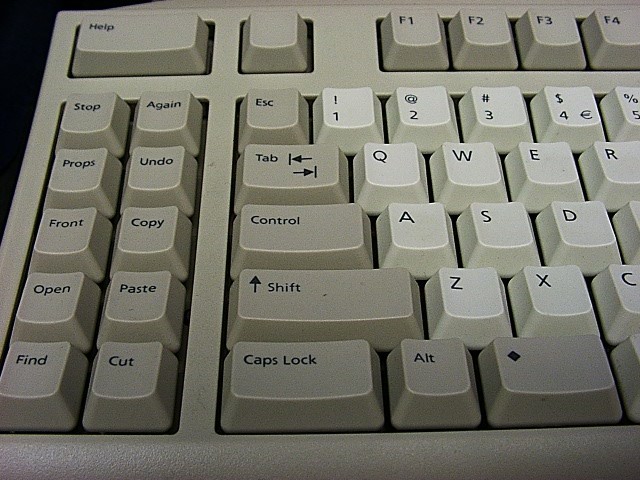
Some interesting aspects:
- 2 columns of extra function keys on the left: {Stop, Props, Front, Open, Find, Again, Undo, Copy, Paste, Cut}.
- The CapsLock is at the lower left corner, and Ctrl on the right of A key. 〔see Control Key and Capslock Key Positions〕
- Big Help button on the top left.
- A blank key on top left.
- Esc key is to the left of 1.
I hardly ever use this keyboard or sit in front of this computer. So i don't know what these keys actually do. Not sure the Copy, Paste, etc keys actually work out of box in Solaris. I don't think most of these special keys do anything useful by default. The desktop on unixes at the time (CDE) is quite unusable.

X11 on Solaris.
This is CDE. This is how i remember X11, ~1999. Mac OS of the time, or even Windows, is ten times better.
〔see The Unix Pestilence (2003)〕
Most of the time, i just telnet/ssh from the PC running Windows NT, using a generic cheap computer keyboard. This Ultra5 is used as a server, it is one of the test bed for releasing our ecommerce software.

Meta Key
The key marked with a diamond ◆ (U+25C6: BLACK DIAMOND) is the Meta key, a key inherited from Lisp Machine's keyboards and today mostly known for its use in Emacs. Sun's documentation call this key Meta. This key is similar in purpose to the Command key ⌘ command on Apple Keyboards ⌨ , or the Windows key ❖ Window on Microsoft Keyboards ⌨ .
See also:
- Lisp Machine Keyboards ⌨
- Emacs: How to Define Super and Hyper Keys
- Emacs: One Thousand Default Keybinding
Compose Key, Alt Graph Key
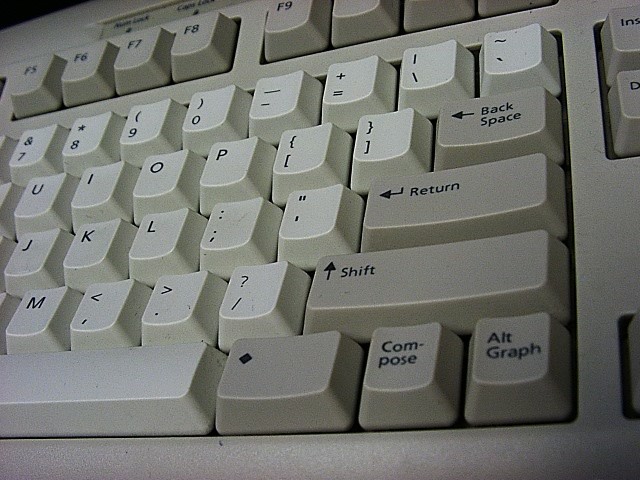
Note the Compose key and Alt Graph keys. They are both used to input special characters such as é ä ç ¿ £ ¥ ©.
〔see Alt Graph Key, Compose Key, Dead Key〕


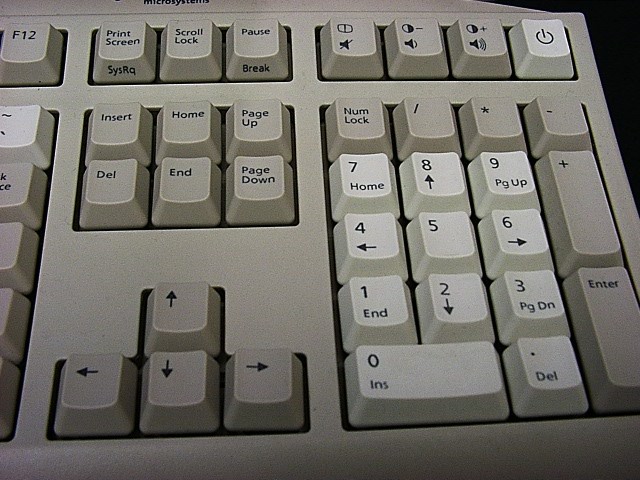
The sound key and screen brightness keys seem funny to me, because i'm not sure these keys work out of the box on a typical unix workstation in the 1990s. Not sure if these machines typically have sound capabilities at all (e.g. a sound card).
Sun Microsystems Type 7 Keyboard
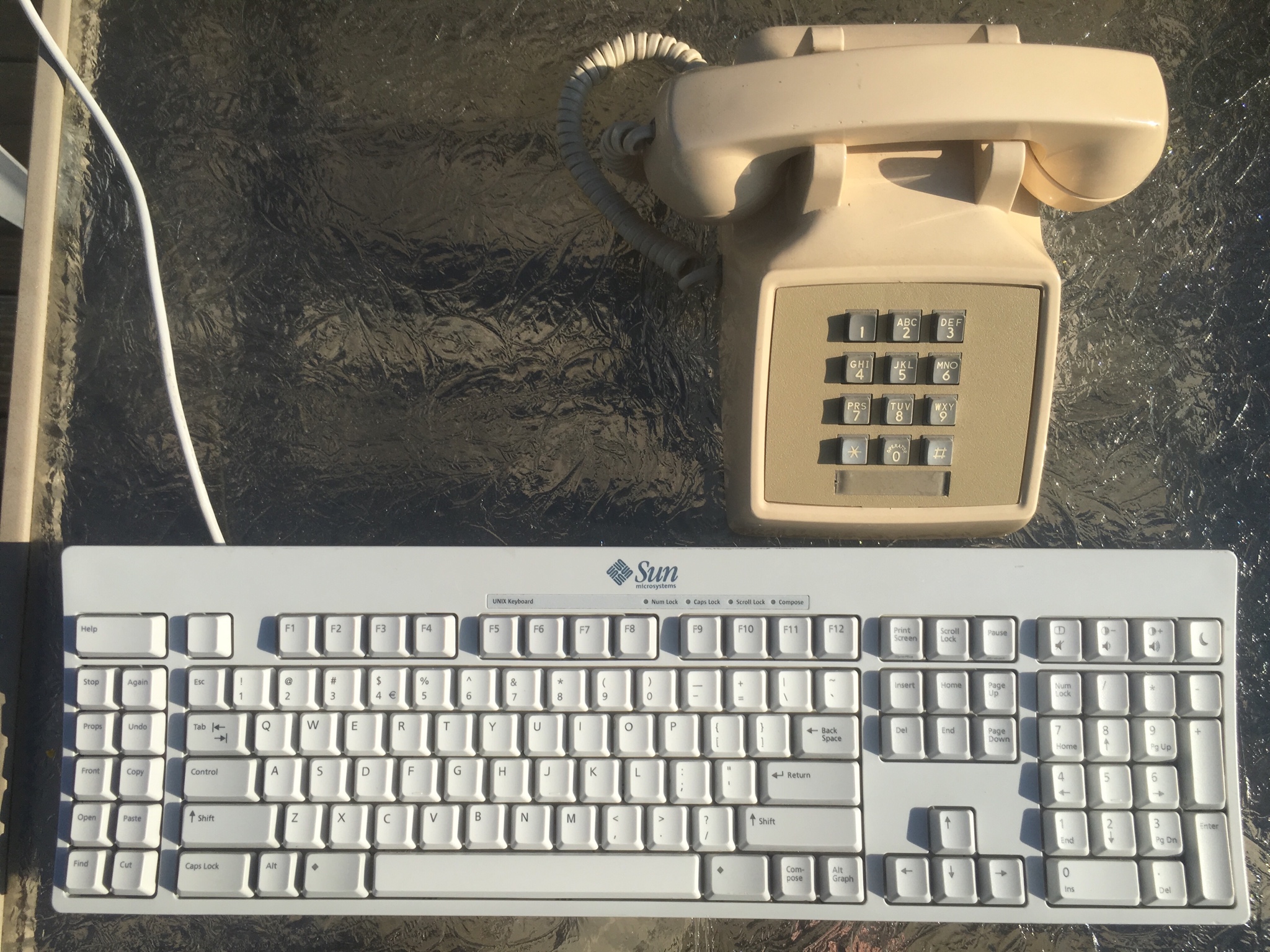

Hacker Lore Keyboards
- IBM Selectric. 1961
- IBM 5251 Keyboard. 1977
- IBM 5100 (year 1975)
- IBM Portable PC Computer 5155 model 68 (year 1984)
- Apple Macintosh Keyboard M0110, Year 1984
- Space Cadet Keyboard
- ADM-3A Terminal
- DEC VT100 Terminal
- IBM Model M keyboard (1985)
- Sun Microsystems Type 6 Keyboard
- Happy Hacking Keyboard (HHKB)